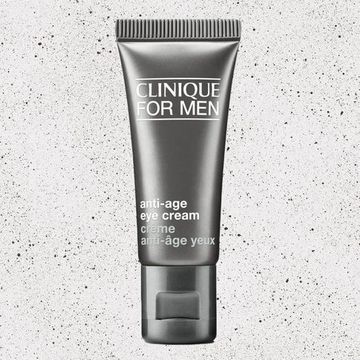There's little to do on the London Underground. Too old to offer working in-tunnel wifi, silent passengers are forced to look ahead and above at the yellowing adverts that seem to fall into three distinct camps: admissions to De Montfort University, discount mattresses that promise a better sleep or your money back, and the before-and-after shots of hair restoration clinics on London's Harley Street and beyond.
The results, they are astounding. Sparse heads, taken from unflattering angles with unflattering lighting, blossom into crowns that'd make Samson cross-examine his own biblical hairline. And in just six weeks! It's easy to 'hmmm' it over. It's also easy to believe the hype of an exclusive postcode, says Dr Edward Maitland Ball, founder and medical director of hair restoration practice The Maitland Clinic, who undertook a fellowship in Beverley Hills under the tutelage of Dr Craig L Ziering: something of A Big Deal in the industry. Maitland Ball also knows much about the business of hair transplants, because he's had one himself. He knows that, for some, thinning hair can be less of an extended glance at a tube advert, and more a stare into the abyss.
"Many people are so desperate to solve hair loss because it just simply ruins their life," he says over a telephone call wedged into another busy day in the surgery. "I've had patients that won't leave the house without a cap, and they don't have the confidence to go out and start dating because they're just so ashamed of hair loss."
Spencer Stevenson was one of those men who perpetually wore hats. “I had my first hair transplant when I was 24 and rushed into it blindly,” he explains over email. It’s been 23 years since that first experience and has since built a career as a patient advocate for those with thinning hair, drawing from his lived experiences and industry knowledge. “There were no resources or reviews to help me back then (I literally only had the Yellow Pages), and I simply jumped in out of desperation and vulnerability. I was emotionally traumatised by my hair loss and wanted a quick fix whatever the cost, as do many today.”
In an age when Instagram rules supreme, it seems more and more people are seeking treatment. According to recent practice census results from the International Society of Hair Restoration Surgery, procedures have increased by 7 per cent since 2019, with more than two million patients in 2021 alone. That makes for an industry worth a staggering $4.5 billion in 2021. That also means rogue agents preying on the insecurities of those with disappearing hairlines.
“I jumped into surgery based on a Super Bowl advert and flew over from the UK to the USA like a lamb to slaughter,” Stevenson says of his ordeal. “I did very little research initially, and was sold inappropriate surgery by an unethical clinic who left me with unnatural results and bad scarring. I had a few surgeries at the same clinic through utter desperation to resolve my issues, but it only made them worse!”
The emotional as well as physical toll was devastating. “I was left disfigured. I felt like a freak – on top of the issues of losing my hair. I hit rock bottom and had to dig deep in order to collect myself.” Since then, he's undergone 12 surgeries to get a head of hair he’s happy with. “I am thrilled with my hair now, and my mission is to make sure millions of hair loss sufferers don't have to experience what I did.”
Maitland Ball has been a fixer of botched transplants in the past, describing incidences as heartbreaking when patients are subjected to what the microsurgery expert describes as 'black market' jobs. "A big alarm bell should be when there's no mention of the actual doctor, as a lot of supposed clinics online are actually brokers that'll take the money and just hire a doctor for the day. You have no idea as to the qualifications or the skills of these people."
What's more, the scale of the operation can be telling. "Low-cost clinics will have lots of patients during the day, and one doctor can't do five surgeries at once, so they may have non-medically qualified people doing the procedure in order to maximise profits." So that £2,000 all-expenses-paid operation abroad for a new head of lustrous hair? "Something's got to give," says Maitland Ball. "See evidence of the work they've done, lots of photographs of the same patient from many different angles with the same lighting, the hair styled in the same way, so you can really assess the outcome. A soft, natural looking hairline is often the difference between a good doctor, and a bad one."
The dangers aren't just patches of scorched scalp, though. According to Maitland Ball, brand new hairlines will only look as good as the stuff behind it. The process of transplantation uses hair from other areas that are less likely to suffer balding to bolster those that do. If the frontal section is refurbished, for instance, then you've a brand new Hollywood hairline. But as time passes, other sections of hair will naturally thin, creating inconsistent hair growth that'll arguably look even worse.
"It's not enough to cover the whole of someone's balding if you go on to lose quite a lot of hair up top," says Maitland Ball. "That's why there's a big problem now when very young guys ask for flat, low hairlines who are prone to further loss later in life. You can't replace enough hair later to make it look natural, and it'll just look weird which is one of those life-changing, awful outcomes that people come to us with."
A bad doctor, then, would simply give the patient exactly what they want: no due care given to the hair's natural life cycle, and no thought given to the artistry of it – something Maitland Ball takes pride in. He's seen his work appear on other websites that give an immediate 'yes' to patients. And by that very token, he approaches every case as a 'no' man, to ensure his patients are making the right decision.
"I start every consultation assuming the patient isn't suitable for surgery, and planning for the worst. And then, if you can slowly prove to yourself and to the patient that actually, there is an option we could explore, and it's going to be safe, they become a candidate for surgery." A good consultation factors in your ideal result, but also the most realistic result which is drawn together by considering the severity of baldness within your gene pool, the rate of hair loss and your own age. No man over the age of 30 would have the hairline of a 16-year-old. The best sort of hair transplants should look natural.
There's no one-size-fits-all method, either. Finasteride and minoxidil are two treatments – former taken orally, the latter topically – that have been clinically proven to postpone hair loss in many cases, and Maitland Ball recommends supplementing surgery with these treatments. What's more, there are two forms of surgery one can opt for, with both of equal standing in the field. FUT (shorthand for 'follicular unit transplant') involves taking a 'donor' site: a strip of skin with hair follicles, usually from the back of the head. These are then separated and placed into the recipient site after small holes are surgically made in the area that is to be restored. The other option, FUE (which stands for 'follicular unit excision'), harvests individual hair follicles rather than removing a strip of tissue, and implants these into the scalp following tiny incisions that are made to the head.
There are pros and cons to both, but neither are one-time fixes. Hair grows, and dies, and grows again. And sometimes it doesn't. While Maitland Ball says that success rates are high, there's a general understanding that patients will require more than one transplant in their life – top-ups for the areas that didn't receive a helping hand first time round. The poster on the Metropolitan Line isn't so forthcoming about that – does James (32, Account Manager), Max (46, Consultant) and John (22, student) look like real people? – and neither was that 20-year-old Superbowl Advert.
“When I had my first hair transplant, I was told I would only need one,” says Stevenson. “I was lied to, and this is very, very common. Education is vital, and informing patients about the progression of hair loss and that most will likely need multiple surgeries, even people with small requirements, is paramount.”
The anxiety of hair loss is real – very much so – and providing you follow the rules, do your research – Stevenson recommends looking to Spex Hair, The Bald Truth UK radio show, and the IAHRS – and accept that your hair will not, and should not, be as dense as your adolescent years, then know you'll receive much more than a crown restoration. It's your confidence that'll bloom once more, too.
Verdict: Despite what the #spon content would have you think, hair transplants are no light decision – financially and physically. But if you're patient about the results, and the consultation (which should take some time all on its own), then expect a fuller head of hair and a fuller sense of self-confidence. Just please don't pay £500 for an all-expenses paid procedure abroad. Really, don't.













